It is one of life’s comforts to see a forgotten trinket being dusted off and appreciated afresh. So in chess, I am gently heartened to see a chess opening pass through that same phase of life. The game has its share of magpies, for whom a shiny new opening gambit is irresistible. Their approach has merit — after all, an ambushed opponent is a weakened one. But with time, the defence is remedied, and when the opening begins to look tarnished, it will soon be stuffed in the attic. It might be years, or decades, before it attracts any more attention.
Even in the 19th century, some chess fashions had already been and gone, and come back around. Wilhelm Steinitz’s The Modern Chess Instructor, Part II (1895), had this to say about a variation of the Giuoco Piano/Italian game (1 e4 e5 2 Nf3 Nc6 3 Bc4 Bc5, with 4 c3): ‘In spite … of its theoretical condemnation, enterprising players like Albin and Schiffers have taken it up within the last few years’. The Evans Gambit (1 e4 e5 2 Nf3 Nc6 3 Bc4 Bc5 4 b4!?), was another line thoroughly analysed in the 19th century. But it was certainly an obscure choice when Garry Kasparov resurrected it in 1995, winning a brilliant miniature against Vishy Anand.
Indeed, there seems no end to the novelties concealed in the Italian opening. A few years ago, Oleg Skvortsov, a strong amateur player and sponsor of the Zurich Chess Challenge, tried an imaginative idea against Anand in an exhibition game before the tournament in 2017. Anand was goaded into action and won in dazzling style. The idea looked destined for the junk shop, but it was alchemised by Daniil Dubov last month in a spectacular game at the Russian Championship Superfinal. It is a curious coincidence that both winners sacrificed queens on the g3/g6 squares in front of their opposing kings.
Daniil Dubov–Sergey Karjakin
Russian Championship Superfinal, December 2020
1 e4 e5 2 Nf3 Nc6 3 Bc4 Bc5 4 c3 Nf6 5 d4 exd4 6 b4!? Here, this thrust is extremely unusual. 6 cxd4 and 6 e5 are far more common. 6… Bb6 7 e5 Ne4 Dubov had undoubtedly prepared an improvement on the Skvortsov–Anand game which continued: 7… d5 8 exf6 dxc4 9 Qe2+ Be6 10 b5 Nb4!? Extraordinary. 11 fxg7 Rg8 12 cxb4 Qf6 13 O-O Qxg7 14 g3 O-O-O 15 a4 d3 16 Qb2 Qxg3+! 17 hxg3 Rxg3+ 18 Kh2 Rxf3 19 Bg5 (better was 19 Kg2 Bd5 20 Kh2 Be6 with a repetition) Bd4 20 Qd2 Rg8 21 Ra3 h6 22 Rg1 Rh3+ 23 Kg2 Rxg5+ 24 Kf1 Rxg1+ 25 Kxg1 Bd5 White resigns. 8 Bd5 Nxc3 9 Nxc3 dxc3 10 Bg5 Ne7 11 O-O For the price of two pawns, Karjakin’s pieces are tied up in knots. 11… h6 12 Bh4 O-O 13 Re1 Qe8 14 Bb3 a5 15 Bf6! a4 16 Bc4! The right diagonal, as soon becomes clear. 16… Ng6 17 Qd3 d5 A necessary bid for freedom. 18 exd6 Be6 (see diagram) 19 Qxg6! 19 Bxe6 Nf4! 20 Qxc3 fxe6 21 Bxg7? Qg6! would turn the tables. 19… fxg6 20 Rxe6 Qf7 20… Qc6 21 Re7+ Qxc4 22 Rxg7+ Kh8 23 Rxc7+ Rxf6 24 Rxc4 Rxd6 25 Rxc3 leaves White a pawn up in the endgame. 21 Bxc3! 21 Ne5? Qxe6 22 Bxe6+ Kh7 23 Bh4 Rfe8 sees Black come out ahead. Kh8 22 Re4 Qf5 23 Re7 Rg8 24 Bxg8 Rxg8 25 dxc7 Qc2 26 Be5 The passed pawn, combined with pressure on g7, is more than Black can handle. Bxf2+ 27 Kh1 Bb6 28 h3 Kh7 29 Re1 a3 30 Kh2 g5 31 Nd4 Qc4 32 Nf5 Qxb4 33 Rc1 Kg6 34 Rxg7+ Kxf5 35 Rxg8 Bxc7 36 Bxc7 Qb2 37 Rc5+ Ke4 38 Rd8 Black resigns
Got something to add? Join the discussion and comment below.
Get 10 issues for just $10
Subscribe to The Spectator Australia today for the next 10 magazine issues, plus full online access, for just $10.
You might disagree with half of it, but you’ll enjoy reading all of it. Try your first month for free, then just $2 a week for the remainder of your first year.

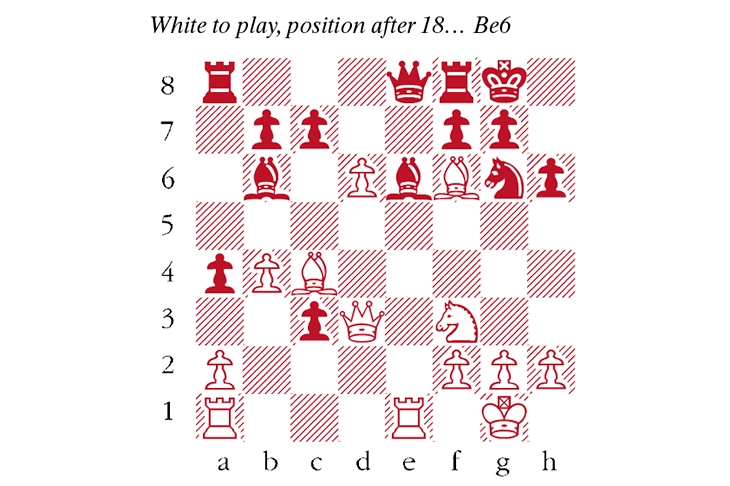
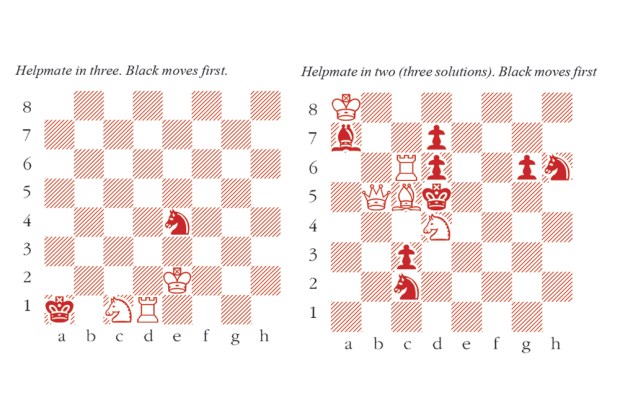
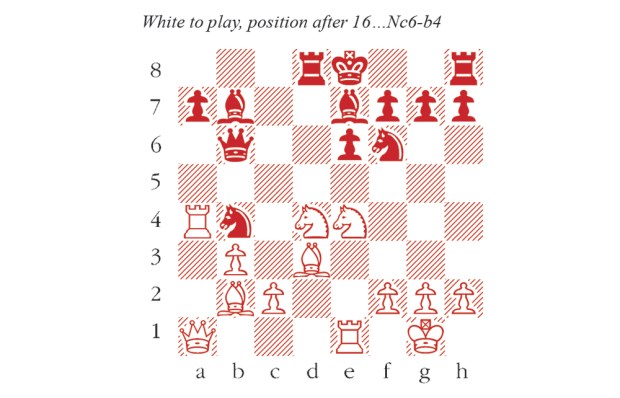
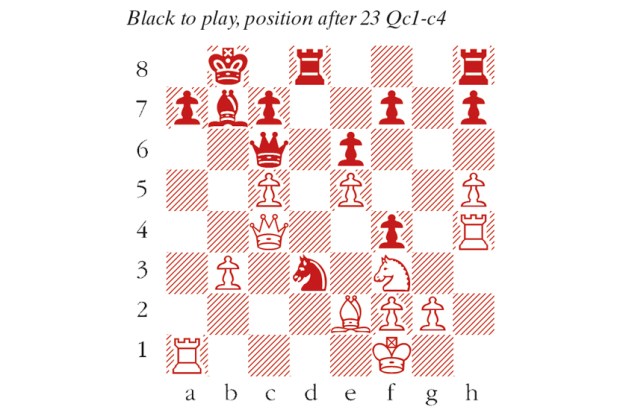
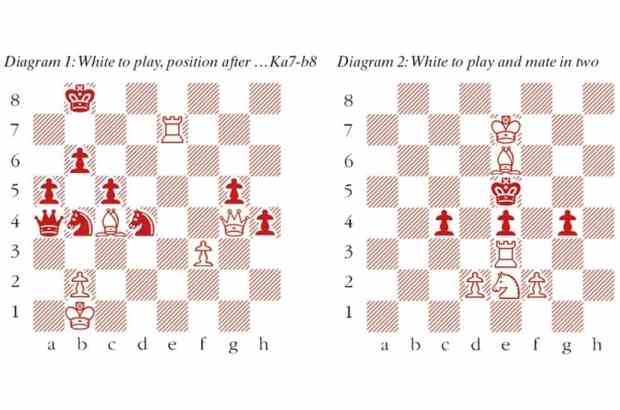
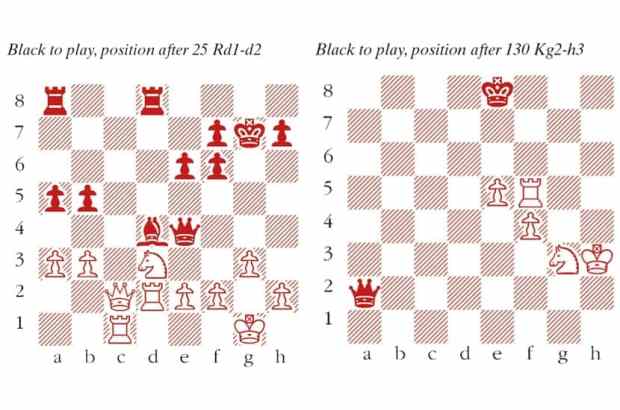
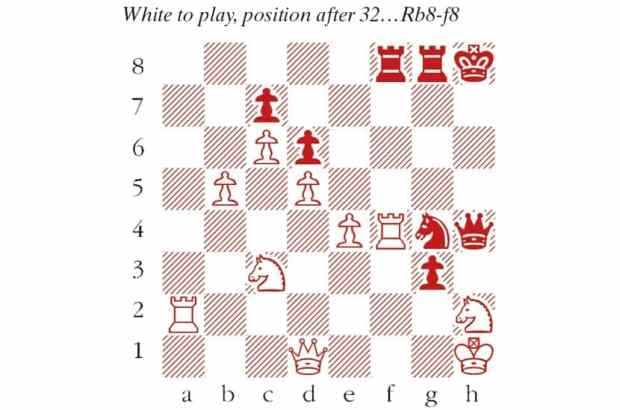






Comments
Don't miss out
Join the conversation with other Spectator Australia readers. Subscribe to leave a comment.
SUBSCRIBEAlready a subscriber? Log in